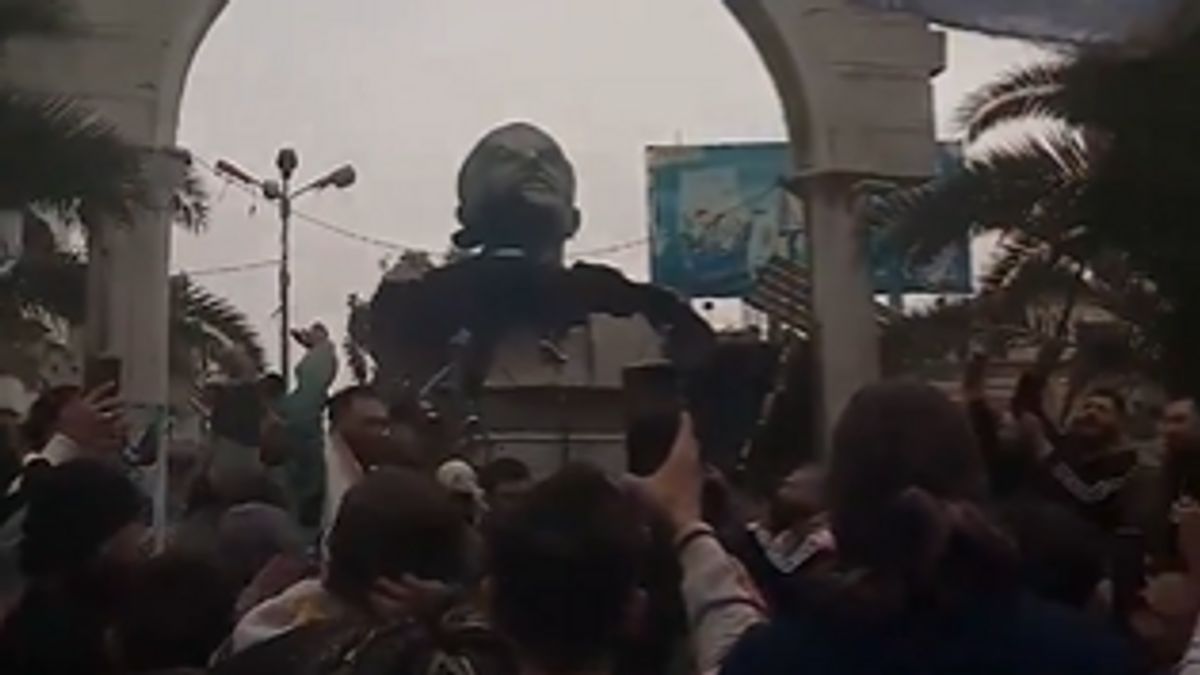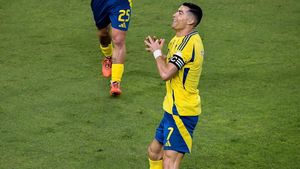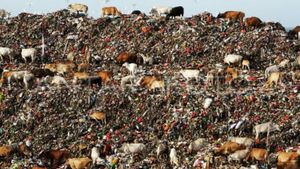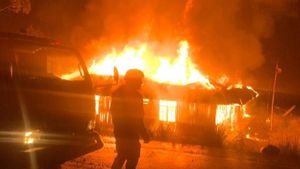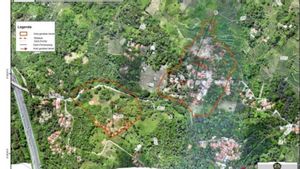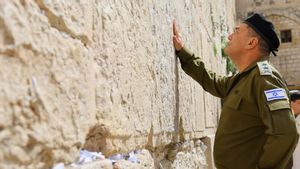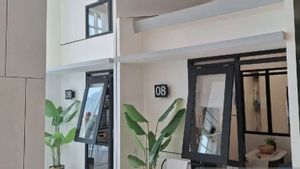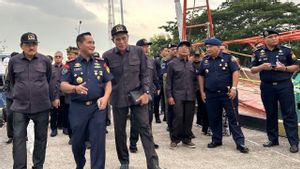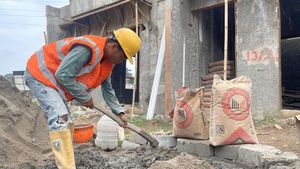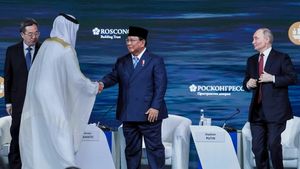JAKARTA - Syrian rebels have entered Damascus and knocked down the Basshar Al Assad statue at the Presidential Palace.
Syrian rebels continued to advance quickly on Saturday, December 7, 2024, local time. They had captured important cities before visiting President Bashar Al Assad's Palace.
They started attacking from the south, now claiming control of the southern suburbs of Darayya in the capital as they get closer to overthrowing the dictator.
The insurgents' rapid progress continues with key cities, small towns, and now some capitals fall on Saturday.
A statue of Assad's father, Hafez, has been torn down on the eastern suburbs of Jaramana. This is known from a video recording on social media that has been widely circulated.
In a Wall Street Journal report, the Assad family has fled to Russia and Egypt and has asked to form a government in exile.
This is the first time Assad has faced military challenges in Damascus since 2018 and comes as its troops seem to have started leaving the regime.
SEE ALSO:
Rebels backed by Turkish Islamist group Hayat Tahrir al-Sham (HST) and his allies launched an attack on the Assad administration from the northwestern corner of the country last week.
However, the southern rebels, known as the South Operations Room (Southern Operatons Room), rose at the same time and attacked north in a coordinated attack.
Cities in the south have been handed over to local rebels over the past few days as regime forces withdrew to Damascus.
Syrian dictator Bashar Al Assad, who used nerve gas in his own people in 2013, continues to control parts of Syria's western and central regions.
However, it may not be a problem if Assad is expelled from Damascus, arrested, or tried by rebels.
The southern militants seized the big southern city of Daraa on Friday, December 6, 2024, evening local time and let government forces withdraw back to Damascus.
Yesterday and today the rebels continued to seize small villages and towns on the road to the capital while government forces withdrew.
About 2,000 Assad soldiers fled across the border into Iraq.
The rebels now control the Syrian border with Israel and almost the country's southwestern region.
The southern rebels claim to also control a number of cities in rural Damascus.
Earlier, the Syrian military said it was repositioning in the south, without acknowledging territorial losses, and denied that they had withdrawn from the area near Damascus.
"Our forces operating in Daraa and as-Suwayda are re-submissioning, repositioning, and building a strong and cohesive defense and security in that direction," read a Syrian military statement.
However, war monitor Syrian Observatory for Human Rights (Syria Observatory for Human Rights) said that the entire area around Damascus had witnessed the withdrawal of regime forces.
The Syrian military has denied claims about the withdrawal of troops around Damascus.
A spokesman called the claim a false media campaign by armed terrorist organizations with the aim of spreading panic and fear among civilians in rural Damascus.
Since HTS stormed Aleppo a week ago, government defenses have collapsed across the country.
Rebels rose in places that appeared to have long ended insurgency, such as Daraa, which was the birthplace of the 2011 revolution.
In the cities captured by the rebels, statues, signs, and paintings of the Assad family were torn down and shot down.
Meanwhile, HST is now moving towards the city of Homs, the site of a three-year brutal siege at the start of the civil war.
The government's defense is focused on Homs, with Syrian state television and military sources reporting massive airstrikes against rebel positions and reinforcements arriving to defend around the city.
On Thursday, December 5, 2024, HST captured the main city of Hama which allowed them to move further on the road to Homs and seize the center of state.
Another rebel group has captured the historic desert city of Palmyra after government forces withdrew to defend Homs.
Assad has also lost the eastern city of Deir al-Zor which fell into the hands of rebels.
Earlier, in Syria's civil war, Assad was rescued by Russia and Iran who used their proxy forces and air advantages to repulse the rebels.
According to Bloomberg, Vladimir Putin had no plans to save Assad and did not see the plan emerge as government forces continued to give up fighting.
The Kremlin has helped Assad with airstrikes to defend itself, but invested too much in Ukraine to provide great support to its allies.
It is not yet clear what will happen with two Russian military bases in the country, Khmeimim Air Base and Tartus Naval Base.
Russia has recalled its ships from Tartus, the headquarters of the Medinterranean fleet, but claims it was for training.
Russian Foreign Minister Sergei Lavrov claims Russia is trying to do everything not to let terrorists win.
Meanwhile, Iran has begun withdrawing its military commander from the country when its other allied forces collapse.
HST rebels said they were on the Homs wall after seizing the last village on the northern outskirts on Friday night.
Within Homs, a resident told Reuters the situation felt normal until Friday, but became more tense with the sound of airstrikes and clear gunfire as well as pro-Assad militia groups setting up checkpoints.
"They send messages to people to stay calm and that they shouldn't expect Homs to fall easily," said one resident.
Fighting Homs, the main intersection between the capital and the Mediterranean, will separate Damascus from the coastal stronghold of the Alawite Assad minority.
A Syrian military officer said there was a pause in fighting on Saturday morning after an intense airstrike last night against rebels.
Ahead of the progress of the rebels, thousands of people left Homs towards the coastal areas of Latakia and Tartus, the government's stronghold.
The English, Chinese, Japanese, Arabic, and French versions are automatically generated by the AI. So there may still be inaccuracies in translating, please always see Indonesian as our main language. (system supported by DigitalSiber.id)
